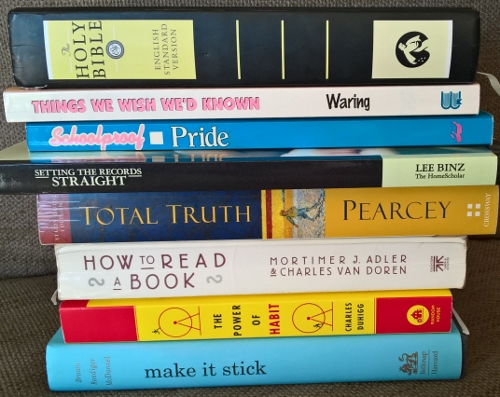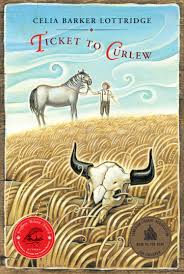This is one of the most difficult books I’ve read recently, not so much because of its intellectual challenge but because I need to absorb and understand it at a deep level in order to support loved ones in pain. I have read it twice in the last two months while trying to apply its insights to everyday situations, and it has changed the way I think.
Explained simplistically, the concepts of Explain Pain could be considered cruel and unhelpful; explained well, they are life-changing and life-giving. So please bear with me while I try to give you the gist of this book and then, if you or a loved one deals with chronic pain, study the book yourself to understand it more thoroughly.
Almost all pain begins with tissue damage, but at a certain point chronic pain may spread through the body if the nervous system, immune system, endocrine system, and motor system become sensitized to pain and try to over-protect the body from perceived threats. This is related to many body systems becoming hypervigilant, and is no longer related as much to direct tissue damage. So the approach to chronic pain is essentially two-fold:
- deal with the tissue damage and
- reduce the hypervigilance that has overtaken the body’s systems.
Learning about pain helps a sufferer with the latter, and that is what this book is about. It discusses
- how the brain perceives pain,
- how pain messages are conveyed to the brain,
- what happens to tissue when it is damaged,
- how pain and other sensors become more sensitive to pain,
- what happens in the spinal cord when the body becomes sensitized to pain,
- how the nervous system, the endocrine system, the immune system, and the motor system become involved.
Finally, Explain Pain discusses pain theories, how experts can help, and how sufferers can help themselves using various coping strategies. It also shows which kinds of coping strategies are more effective than others and it details three approaches that almost always help.
Filled with footnotes to recent scientific literature, Explain Pain outlines the latest pain research for the ordinary person. Although many medical professionals do not think untrained people can understand pain science, Dr. Butler and Dr. Moseley have learned that they can and that this understanding is a vital part of learning to manage their pain.
Among other things, the ideas presented in this book and reinforced by my daughter’s (Miss 14) pain specialists have really helped her. She is at her lowest pain level in years despite embarking on an ambitious (but very gradual) strength-training program and being on the go almost constantly. She is now also able to study adult level specialist books in animal care and human kinesiology, whereas in the past she could often hardly concentrate enough to read at all. Even though she is not yet well, the improvements in her life are mind-boggling, and a lot of them have to do with concepts presented in Explain Pain.
If chronic pain is a factor in your life or in the lives of those you love, please read Explain Pain. Its ideas can make a significant difference.
Notes:
–We were blessed with a talented and dedicated neurological physiotherapist who, while caring for my daughter, discussed pain science with us for hours. Perhaps God will send such a compassionate and knowledgeable person into your lives as well.
–As our pain doctor pointed out in a careful, politically-correct way, those who believe that God is in control of their lives and makes all things work out for good have a great advantage in the struggle with pain. This is not stated in Explain Pain, but the concept is fully compatible with the science discussed in Butler and Moseley’s book.
—Explain Pain does not focus much on tissue pain itself; it does, however, help with the extra pain that so easily builds up around tissue damage pain due to sensitization of the body’s various systems.
—As mentioned, Explain Pain focuses largely on the aspects of pain that are not directly related to damaged tissues. A complimentary approach that can help long-term tissue pain, especially in complex conditions, involves eliminating gluten and/or yeasts from the diet. Magnesium supplements and magnesium cream (to rub on the skin) can also make an enormous difference. (It is assumed that intake of calcium and vitamin D is adequate.)
–This recent report is an example of what can happen to neurons in pain conditions; other scientific advances detail what happens when one is able to calm sensitized body systems. Surely, as the authors of Explain Pain state, ‘we are highly integrated beings and fearfully and wonderfully complex.’ p 111
–Painful Yarns by Moseley presents stories and metaphors to help you understand the biology of pain. The language is a bit rough and many of the stories are about trucks and other masculine interests, but the book did help me understand pain better and explain it more effectively. This is a helpful but not required companion volume to Explain Pain.
–Two related books that I have not read:
- The Explain Pain Handbook Protectometer by Moseley and Butler, which I hope to read soon.
- Explain Pain Supercharged by Butler and Moseley, which is for health care professionals.
–In Explain Pain I read one sentence that made me wonder how many of these concepts can apply to debilitating fatigue. Although I suspect that much in this book is irrelevant to fatigue, some of the treatment approaches in Chapter 6 contain insights similar to those I have found helpful for fatigue management.
—
If you enjoyed this article, you might want to follow me on Google+ where I often mention helpful or interesting ideas, or connect with me on GoodReads where I share what I read.
Disclosure: We borrowed this book from my daughter’s physiotherapist and are not compensated for recommending it to you.





